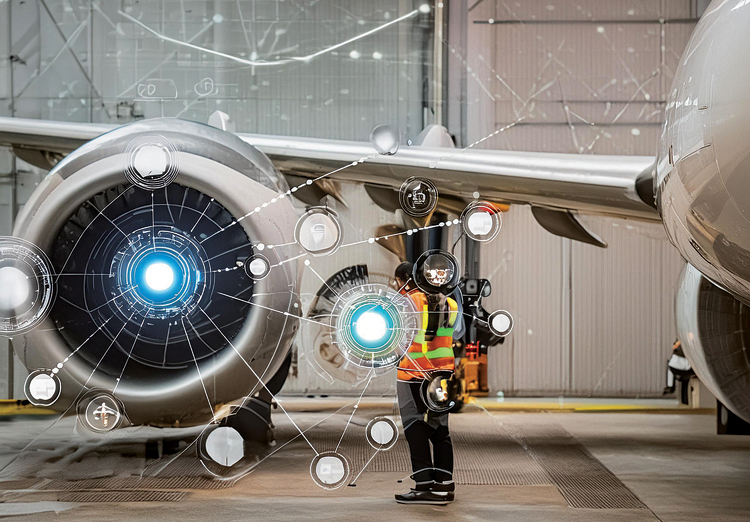INDIAN ARMED FORCES CHIEFS ON OUR RELENTLESS AND FOCUSED PUBLISHING EFFORTS

The insightful articles, inspiring narrations and analytical perspectives presented by the Editorial Team, establish an alluring connect with the reader. My compliments and best wishes to SP Guide Publications.

"Over the past 60 years, the growth of SP Guide Publications has mirrored the rising stature of Indian Navy. Its well-researched and informative magazines on Defence and Aerospace sector have served to shape an educated opinion of our military personnel, policy makers and the public alike. I wish SP's Publication team continued success, fair winds and following seas in all future endeavour!"

Since, its inception in 1964, SP Guide Publications has consistently demonstrated commitment to high-quality journalism in the aerospace and defence sectors, earning a well-deserved reputation as Asia's largest media house in this domain. I wish SP Guide Publications continued success in its pursuit of excellence.
Push AI for Better Safety
The aviation industry has always prioritised safety above all else and with technological advancements, particularly in artificial intelligence (AI), new horizons for safety enhancements are continually being explored and implemented

Artificial intelligence, with its capacity to process vast amounts of data and learn from it, is well-positioned to address numerous safety challenges in aviation. Some key areas where AI is making significant strides are:
Predictive Maintenance. One of the critical applications of AI in aviation is predictive maintenance. Traditional maintenance schedules are based on fixed intervals, which might not account for the actual wear and tear on specific components. AI systems analyse data from sensors on aircraft to predict when a part is likely to fail. This proactive approach can prevent potential malfunctions that might lead to in-flight incidents.
Flight Path Optimisation. AI can optimise flight paths by analysing weather patterns, air traffic, and other variables in real-time. This not only enhances fuel efficiency but also ensures that flights avoid turbulent or hazardous conditions, thereby increasing passenger safety.
Pilot Assistance and Automation. AI systems can act as advanced co-pilots, providing real-time assistance to human pilots. These systems can analyse vast amounts of flight data instantaneously, offering suggestions or taking automated actions to prevent accidents.
Enhanced Air Traffic Management. AI can vastly improve air traffic management by predicting traffic patterns and optimising flight schedules. This ensures smoother operations and minimises the risk of mid-air collisions and other traffic-related incidents. SESAR (Single European Sky ATM Research) uses AI to enhance air traffic management across Europe. By predicting traffic flows and optimizing airspace usage, SESAR aims to reduce congestion and improve overall safety in European skies.
PROMOTING AI IN INDIAN AVIATION
To fully leverage AI’s potential in improving aviation safety, the Indian government needs to take several proactive steps to encourage its adoption among Indian airlines.
Developing a National AI Aviation Strategy. The government should formulate a comprehensive AI aviation strategy, outlining clear objectives and providing a roadmap for integrating AI into various aspects of aviation. This strategy should be developed in collaboration with industry stakeholders, including airlines, tech companies, and regulatory bodies. A dedicated task force comprising experts from the aviation and AI sectors should be established to guide the development and implementation of this strategy.
Investing in Research and Development. Significant investment in R&D is crucial for advancing AI technologies tailored to the unique needs of the Indian aviation sector. This includes funding for pilot projects and collaborations with global aviation tech leaders. The government should create innovation hubs or centres of excellence focused on AI in aviation. These hubs can facilitate collaboration between academia, industry, and government bodies to drive innovation.
Regulatory Framework and Standards. A robust regulatory framework is essential to ensure the safe and effective deployment of AI in aviation. The government should develop clear guidelines and standards for AI applications, ensuring they meet stringent safety criteria. Regulatory bodies like the Directorate General of Civil Aviation (DGCA) should develop certification standards for AI systems used in aviation, ensuring they are rigorously tested and certified before deployment.
Training and Skill Development. The successful adoption of AI in aviation requires a skilled workforce. The government should invest in training programmes to equip aviation professionals with the necessary skills to work with AI technologies. Specialised training programmes on AI and data analytics should be launched for pilots, engineers, and air traffic controllers. Partnerships with educational institutions can help in developing these programmes.
CONCLUSION
Artificial intelligence holds the promise of ushering in a new era of safety in commercial aviation. By predicting maintenance needs, optimising flight paths, assisting pilots, and enhancing air traffic management, AI can address many of the safety challenges faced by the industry. For Indian airlines to fully harness these benefits, a concerted effort from the government is essential. The government should encourage collaborations between airlines, tech companies, and research institutions while providing incentives for airlines and tech companies to collaborate on AI projects, including tax benefits and grants for joint research initiatives. Through strategic planning, investment in R&D, robust regulatory frameworks, skill development, and fostering public-private partnerships, the Indian aviation sector can soar to new heights of safety and efficiency.





